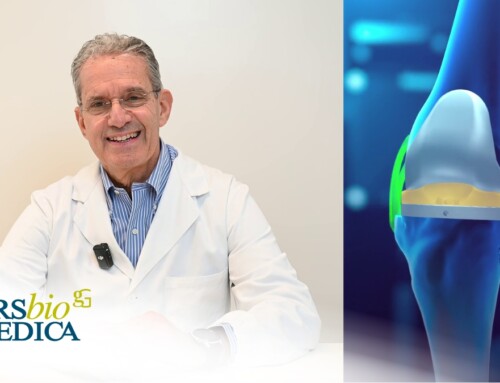
Articolo del 04/11/2024
Knee replacement surgery provides pain relief and enhances quality of life, allowing patients to return to daily activities. However, many wonder how long it will take to get back to a normal life and if resuming sports—whether low-impact or more intense—is possible.
To clarify these points and understand what to expect from the recovery process, we spoke with Dr. Gabriele Bolle, a knee specialist at Arsbiomedica.
Is it Possible to Return to Sports After Knee Replacement Surgery?
Absolutely! Returning to sports after knee replacement surgery is increasingly important for patients today. While the primary goal used to be pain-free walking, often with aids, patients now often aim to return to active sports like skiing or tennis, which presents new challenges for orthopedic surgeons.
How Soon Can Patients Return to Sports?
Full functional recovery, achieved through rehabilitation focusing on muscle strengthening, joint mobility, and stability, typically occurs around three months post-surgery. However, recovery time is highly individualized.
Between 90% and 100% of patients can resume low- to moderate-impact sports. High-impact sports, however, are less common and more controversial. After three months, swimming and cycling are often recommended, while higher-impact sports can be considered after six months if muscle tone and strength have fully recovered.
It’s essential to remember the possible risks and complications associated with sports activity for prosthesis users, including:
- Instability
- Aseptic loosening
- Periprosthetic fractures
Are Certain Activities Discouraged?
While there is no definitive consensus in the scientific literature regarding “return to sports,” a guideline has been developed to help knee prosthesis patients who wish to resume physical activity.
Recommended Activities:
- Stationary cycling
- Walking
- Swimming
- Cross-country skiing
- Water aerobics
Recommended for Experienced Athletes Only:
- Golf
- Hiking
- Ice or inline skating
- Climbing
- Doubles tennis
- Horseback riding
- Bocce
- Skiing
Discouraged Activities:
- Basketball
- Baseball/Softball
- Volleyball
- Soccer
- Handball
- Singles tennis
- High-impact aerobics
It’s important to note that current guidelines are based on expert opinions rather than solid scientific evidence. The patient’s knowledge of proper sports technique also plays a significant role.
Are There Differences Between Partial and Total Knee Prostheses?
Yes, partial knee replacements, which preserve the cruciate ligaments, maintain the knee’s natural biomechanical pivot and crucial proprioceptive function. Thus, for high-level athletes or patients wanting to continue competing, a partial knee prosthesis is often recommended when suitable.
What Does the Future Hold?
Continuous innovations in joint prosthetics, including materials and surgical techniques, are making prosthetic biomechanics more similar to those of natural joints. These advancements allow an increasing number of knee replacement patients to participate in sports, steadily expanding the range of possible activities.






